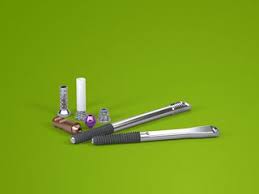Zygoma Implant
Zygoma Implant : Implant placement in patients with melted upper jaw bone is a very difficult treatment. When used appropriately, zygoma or cheekbone implants are an alternative treatment option for many patients with fused upper jawbone.
Making prosthetic teeth and placing implants in patients with severely fused maxilla presents challenges for both surgeons and prosthodontists. If only conventional implants are to be used in patients with a melted maxilla, bone grafting may often be required before placing the implant in the area to be implanted. This procedure usually involves elevation of the sinus floor and application of bone grafts. In these applications, the troublesome and difficult treatment, long treatment time, costs and potential complications are important considerations. These are important factors that cause patients to stay away from treatment.
LOSSES IN MUSLED UPPER JAW
Bone grafting methods are often avoided with zygoma (cheekbone) implants, and patients can continue to use a temporary prosthesis throughout the treatment. When used appropriately, zygoma implant provide an alternative treatment option for many patients with fused maxillary bones. The success of traditional implants applied to the maxilla can be controversial depending on the amount and quality of bone. In recent years, zygomatic implants have become an alternative to extensive surgical procedures, especially in patients with severe resorption of the maxilla or in patients who have partially or completely removed the maxillary bone due to tumors. The main support of these implants, from 45 mm to 55 mm in length, is provided by the fixation to the cheekbone.
CLINICAL EVALUATION
Today, thanks to the additional implants applied together with the zygomatic implants, the stabilization of the prostheses applied to the upper jaw is ensured. However, in order to perform this application, the amount of bone in the anterior maxilla should allow the placement of two, preferably four, conventional implants. In addition, patients should not have an infection in their sinuses and an acceptable amount of soft tissue should be present in the area where the implants will be placed. Treatment planning of patients should be done before placing the implants. The patient’s medical and physical condition should be able to tolerate the two-hour surgical procedure and general anesthesia or deep sedation. The patient’s mouth opening should allow placement of 30 mm to 52.5 mm long zygomatic implants.
SURGICAL PROTOCOL
Zygoma implant surgery is best performed under deep sedation or general anesthesia. After the zygoma implants are placed, the cut gingiva is sutured. In the upper prosthesis, the areas where the implants are made are loosened and tissue pomades are applied inside the prosthesis. In this way, patients use their old prostheses during the six-month recovery period. In the second step, the implants are connected to each other with a metal bar. Four to six weeks later, after the soft tissues have healed, impressions are taken and the permanent prosthesis is made. The care of patients with zygoma implants is a process that lasts from the completion of the first-stage surgical procedures until there is a full recovery phase. There may be limitations in some important functions, such as changes in the retention of the patients’ prostheses or changes in their chewing ability, but since the patients have prostheses throughout the whole process, this procedure seems more attractive than bone grafting procedures that prevent the use of prostheses.
MAKING THE PROSTHESIS
Final impressions can usually be made three to four weeks after an appropriate healing period. The procedure of this stage also follows the same path as in the construction of fixed bridges in implants. Following the laboratory procedures, threaded rehearsals are performed and the patient is expected to approve aesthetically. According to clinical studies reported by many researchers, it is reported that the success of zygomatic implants varies between 82 percent and 100 percent. In conclusion, in the light of the studies on zygomatic implants, we can say that zygomatic implants can be successfully applied in order to regain function, phonation and aesthetics in patients with severely fused maxillary bone and partial maxillary loss as a result of tumor operation.


